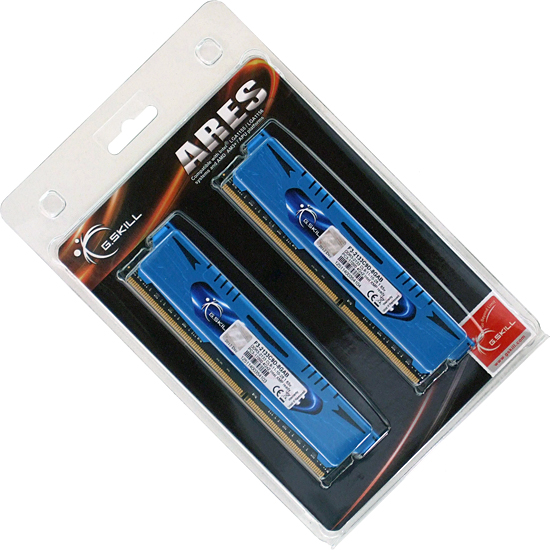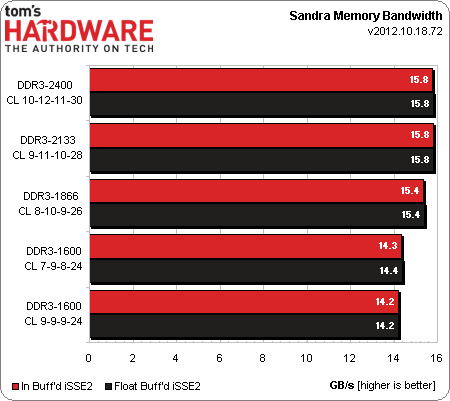Memory Scaling, AMD's Trinity APUs, And Game Performance
When it comes to gaming, the integrated Radeon on AMD's Trinity architecture crushes the HD Graphics 4000 engine native to Intel's fastest Ivy Bridge CPU. But we want to make a good thing better. How much does fast memory help boost an APU's performance?
Memory Scaling On AMD's Trinity Architecture
Intel's CPUs have the high-end gaming crown right now. However, with the introduction of its Trinity architecture, AMD reasserted itself in the mainstream space. Not only did the company prove its worth in our assessment of performance-per-dollar, but it also came out on top in the raw integrated graphics benchmarks, delivering playable frame rates in more titles than Intel's best Ivy Bridge-based effort.
Slow memory is perhaps the biggest inhibitor of integrated graphics performance, since built-in GPUs generally rely on shared system RAM to do their job. Discrete graphics processors have their own dedicated pools of memory, often composed of the latest technologies attached to very wide interfaces, enabling hundreds of gigabytes per second of throughput.
We're thrilled, then, that the Trinity design's memory controller supports data rates up to DDR3-2400. Although 19.2 GB/s per channel is quite a ways off from the 288 GB/s you get from a Radeon HD 7970 GHz Edition's 3 GB of GDDR5, every little bit of bandwidth helps, particularly in games. And that's what we'll be testing today.
As we were planning this piece, G.Skill offered to send its newest high-end memory kit. Rather than spring for one of the most expensive dual-channel combos available, though, we asked the company to ship over something that an A10-5800K-buyer might actually match up to a value-oriented platform.
What we received was G.Skill's $60 Ares DDR3-2133 CAS 9-10-11-28 kit (part number F3-2133C9D-8GAB). We quickly confirmed that the modules were capable of hitting our 2,400 MT/s data rate goal at 10-12-11-30 timings. Excellent.
Using 1-1-1-2-cycle adjustments, we then went backwards to test DDR3-1866 C8 and DDR3-1600 C7 settings. As a final point of comparison, we also added the 9-9-9-24 timings of typical $40 DDR3-1600 budget-oriented memory.
According to SiSoftware's Sandra, there really isn't much reason to run at DDR3-2400, given relatively loose timings. But we’re counting on real-world game tests to give us more definitive results.
Get Tom's Hardware's best news and in-depth reviews, straight to your inbox.
Current page: Memory Scaling On AMD's Trinity Architecture
Next Page Test System And Benchmarks-
Wisecracker Thanks.Reply
The question is ... does the performance with higher speed memory continue to scale as the *SIMD Engine Array* is over-clocked.
Inquiring minds would like to know ...
-
Onus ReplyAnd there were a few games where the faster memory was required simply to break us into our minimally-accepted 40 FPS average.
Right there. An APU is not a top-tier gamer, so incremental improvement really matters. I could not care less about going from 60FPS to 80FPS, but 30FPS to 40FPS, the same relative improvement, is a really big deal. -
slomo4sho slomo4shoI would really like to see some 5760x1080 benchmarks.Reply
Individuals who would use faster memory for gaming are likely to want to push their mid/high range card to the limits, do you plan on doing a similar piece for AMD CPUs as you did in the Intel article "Does Memory Performance Bottleneck Your Games?"
Also, I would like to see a Nvidia card at play as well. Maybe a 650 Ti or 660 Ti? In addition, it wold be nice to see the memory scaling difference between AMD and Nvidia GPUs in a single review.
Thanks. -
merikafyeah esreverCan't wait to see what DDR4 can do for APUs.Considering how DDR3-2400 is only a tiny fraction better than DDR3-2133, it's safe to assume memory stops being the bottleneck around that point. DDR4 will not noticeably improve performance or even power consumption as memory consumes almost negligible amounts of electricity to begin with.Reply
It's back to looking at better GPUs and CPUs for better performance.
Bpttleneck hierarchy has always been GPU>CPU>RAM.
The CPU has always been more reliant on the RAM than the GPU but an APU is basically a GPU+CPU in one, so RAM is more important, but as we've seen, only up to DDR3-2133. After that diminishing returns skyrocket. -
jubas slomo4shoAlso, I would like to see a Nvidia card at play as well. Maybe a 650 Ti or 660 Ti? In addition, it wold be nice to see the memory scaling difference between AMD and Nvidia GPUs in a single review.I didn't know that nVidia made APU's?Reply
The more you know... /rollseyes/ -
de5_Roy quite promising performance from trinity.Reply
still, 15 gb/s out of ddr3 2400 ram is just sad. i expect amd to improve in the next gen apus. the igpus deserve the extra memory bandwidth.
i wonder how cpu overclocking (along with igpu and ram oc) affect the games like skyrim, starcraft and f1. those seemed more memory sensitive.


